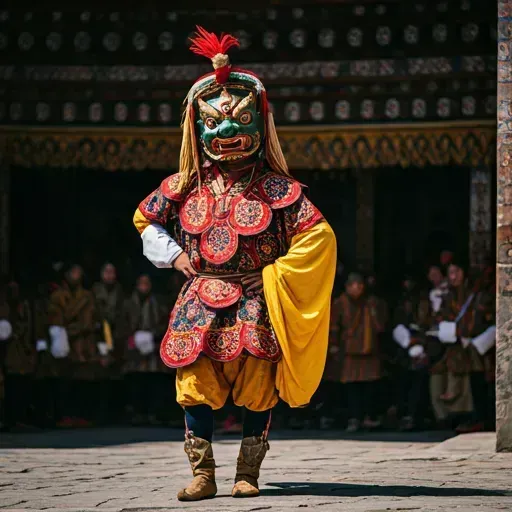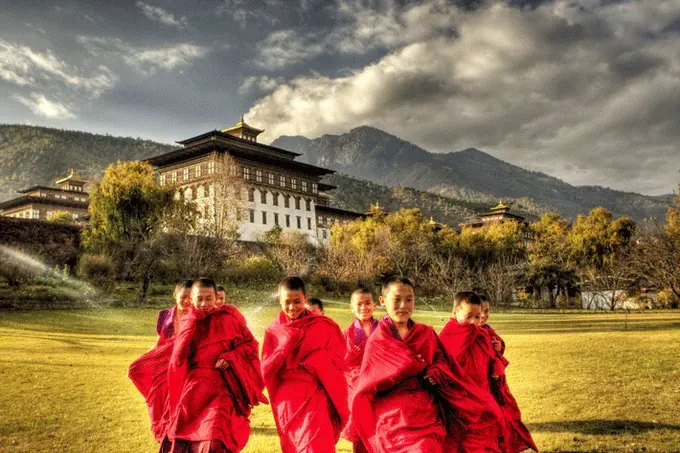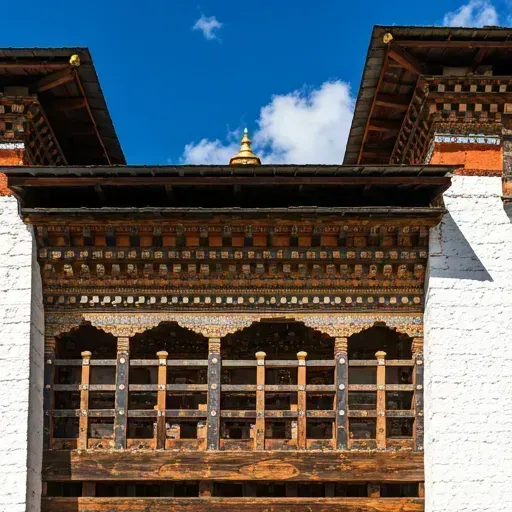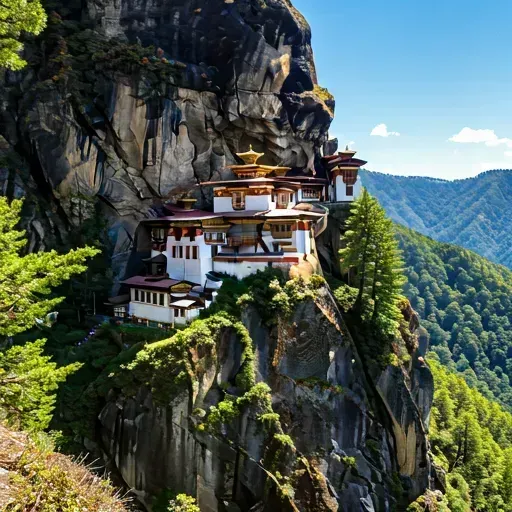BHUTAN: The Last Shangri-La
Discover the serene beauty and unique culture of the world's only carbon negative country.
The Kingdom in the Clouds
Bhutan is a Kingdom in the Eastern Himalayas, also known as Drukyul. The projected population as of November 2025 is 784,4043, with GDP per capita of $4245.68 (National Statistics Bureau [NSB], 2025) living largely in harmony with 71% forest cover providing a rich biological hotspot. Of the 71% forest cover, 52% are protected areas in the form of parks, wildlife sanctuary, and biological corridors); 7% with year-round snow and glaciers; nearly 3% comprises cultivated or agricultural areas; 4% are meadows and pastures; and the rest 16% is either barren, rocky, or scrubland. General commentaries describe Bhutan as the last Shangri-La, a romanticised kingdom in the clouds, and also the happiest country in the world.
Environmentalists see Bhutan as being located in the fragile Himalayan ecosystem ranging from cold alpine zone of 7500 metres above sea level in the north, through the temperate zone in the centre, to subtropical zone in the south of 75 metres above sea level. The wide range of habitats and altitudinal variations create a safe haven for rich biodiversity in the country (DoFPS, 2021). Bhutan is the first and the only carbon negative country in the world (World Economic Forum, 2017).
Economists view Bhutan as vastly rugged terrain and fast-flowing rivers with huge hydropower potential and vast natural resources (Tobden, 2024).
Political analysts define Bhutan as a small but strategically important country nestled between two emerging world powers (China in the North and India in the South). Bhutan’s use of careful diplomacy continues to be a net regional stability provider (Kaul, 2024). Stobdan (2020) applauds Bhutan’s role in the larger strategic balance of power in the region and examines the role of Bhutan in this strategic rivalry and how it navigates its relationships with these two larger powers.
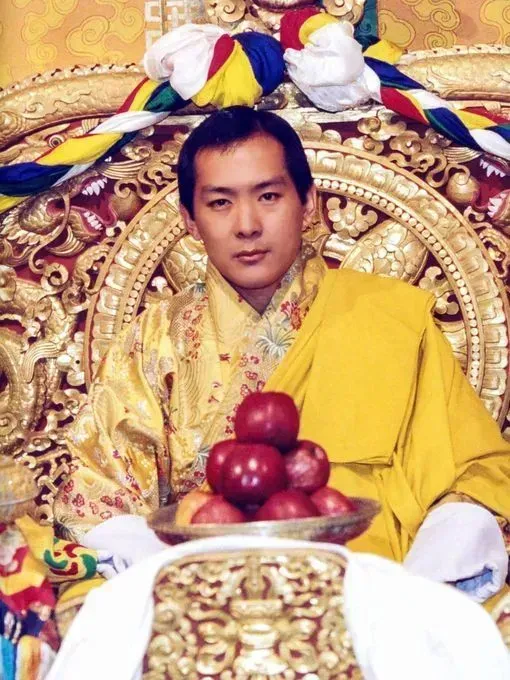
The Great Fourth King of Bhutan, His Majesty Jigme Singye Wangchuck.
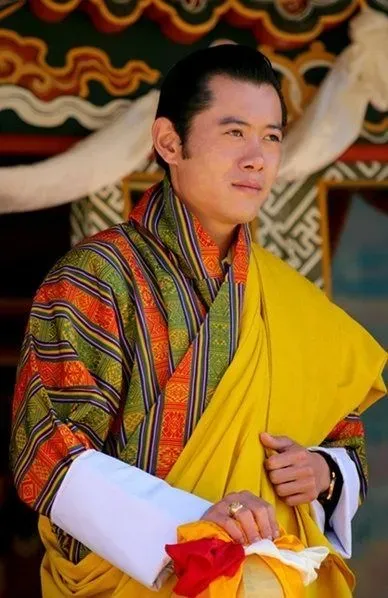
Bhutan: A South Asian Success Story in Development and Peace
The facts about Bhutan from various international data shows that the country has steadily risen in regional rankings on a range of economic, social, and political indicators, both in absolute terms and relative to other South Asian countries. In terms of achievements in Sustainable Development Goals (SDGs), Bhutan’s Global Index score in 2019 was 67.7%, which is 2.9% higher than the regional average of the countries in the region (Sachs et al., 2019). By 2023, the score had increased to 72.3% mainly because of Bhutan’s exemplary leadership of the Great Kings. The Institute for Economics and Peace's (2020) report showed that Bhutan was the 8th country globally and the only country in South Asia that did not record any incidence of civil unrest from 2011 to 2018.
Happiness is a Place
These success indicators draw its strength from the current happiness and wellbeing institutions,
policies, programmes, and practices put in place in Bhutan, under the benevolent and great leadership of
the selfless Kings of Bhutan. Happiness and wellbeing is thriving in Bhutan in light of GNH policies and
programmes, which Bhutan pursued in the 1970s, entered western discourse in the 1980s, and have become a
fashionable topic from 2000. Happiness and wellbeing are thriving in Bhutan in light of various
institutional mechanisms and enabling factors. For instance, the role of the state to promote conditions
to enable the pursuit of GNH is enshrined in the Constitution of the Kingdom of Bhutan (Royal Government
of Bhutan, 2008). The Royal Government of Bhutan, mandated by the constitution, defined GNH as
development with values, and that the end objective of development is to ensure a just, equal and
harmonious society
(Centre for Bhutan and GNH Studies [CBS],
2016).
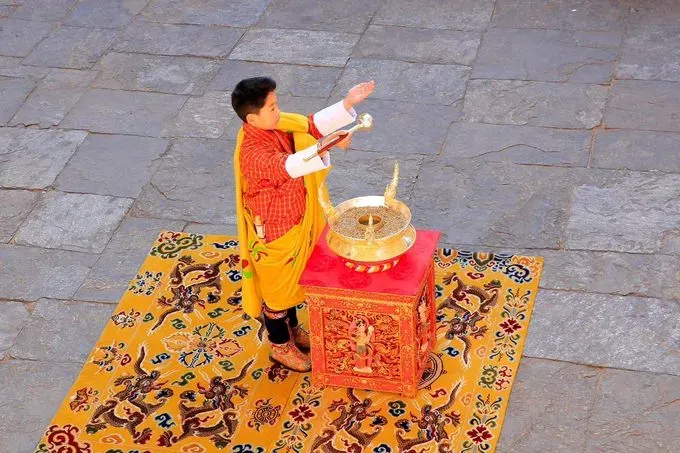
HRH The Crown Prince of Bhutan, Jigme Namgyel Wangchuck, presides over a traditional ceremony.
A Culture Preserved
